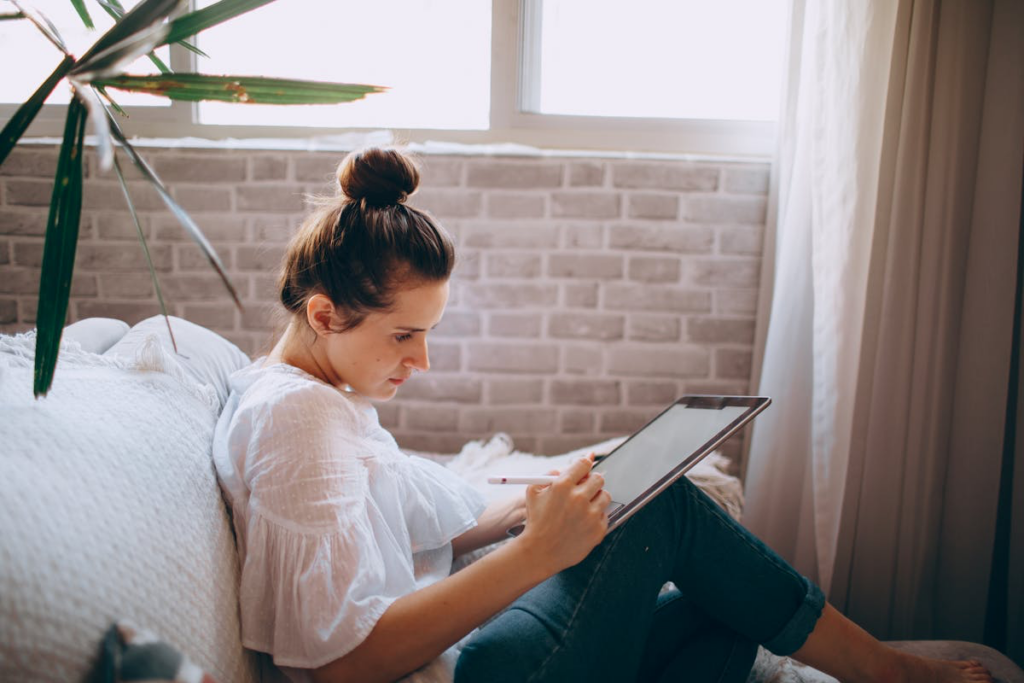Embracing Minimalism for Mental Clarity
Jessica White August 7, 2025
In a world saturated with constant notifications, endless consumer choices, and social pressure to do and own more, many are turning to minimalism—not just as a design trend, but as a lifestyle shift. Embracing minimalism for mental clarity is quickly becoming a powerful counterculture movement, especially among Millennials and Gen Z who are reevaluating what truly brings peace and productivity.
The link between minimalism and improved mental focus is gaining mainstream attention as more studies and public figures speak out about how simplifying life can reduce stress, improve decision-making, and enhance overall well-being. But minimalism isn’t about white walls or having fewer shirts. It’s about being intentional with your space, your time, and your energy.

Why Mental Clarity Is Suffering Today
Before we talk solutions, it’s worth understanding the problem. Our current digital and consumer-driven environment is designed to grab our attention:
- The average person receives over 121 emails per day (Radicati Group, 2024).
- Americans now own an average of 300,000 items per household (Los Angeles Times).
- Social media and multitasking are linked to a 40% decrease in productivity (American Psychological Association, 2023).
The result? Mental fatigue, indecision, and burnout. Clutter—both physical and digital—isn’t just inconvenient. It’s mentally exhausting.
The Rise of Minimalist Living
Minimalism is no longer just an aesthetic found on Pinterest or interior design blogs. It’s becoming a practical, intentional way of living for those craving clarity.
In 2025, Google Trends shows a 35% increase in searches related to minimalist lifestyles, particularly around topics like “decluttering for focus” and “intentional living.”
Some popular minimalist movements gaining traction include:
- Digital Minimalism: Coined by author Cal Newport, this approach promotes reducing digital noise to focus on meaningful online and offline interactions.
- Minimalist Wardrobes: Capsule wardrobes are being embraced by professionals and creatives alike to reduce decision fatigue and boost confidence.
- Slow Living: A lifestyle focused on mindfulness, simplicity, and rejecting hustle culture.
How Minimalism Supports Mental Clarity
1. Reduces Decision Fatigue
Every object, app, and task adds to your brain’s cognitive load. By limiting choices, minimalism helps conserve energy for what really matters.
A 2022 Harvard Business Review study found that professionals who implemented minimalist routines were 23% more productive and reported higher satisfaction in daily tasks.
2. Improves Focus and Productivity
Clutter competes for your attention. Removing nonessential items from your workspace or home environment can lead to fewer distractions and more mental space.
- A Princeton University study revealed that visual clutter limits your brain’s ability to focus and process information efficiently.
3. Promotes Mindful Consumption
Minimalism encourages asking, “Do I really need this?” before buying or committing. This simple habit reduces financial stress and emotional overwhelm.
4. Encourages Intentional Living
With fewer distractions, people find more time for self-care, hobbies, rest, and relationships. These are all core to maintaining long-term mental wellness.
A Practical Guide to Embracing Minimalism for Mental Clarity
Ready to simplify and find clarity? Here’s how to start without feeling overwhelmed:
Step 1: Begin with One Area
Choose one part of your life to minimize. For example:
- Your closet
- Your phone’s home screen
- Your work desk
Start small. The goal is progress, not perfection.
Step 2: Set Clear Intentions
Before decluttering, ask yourself:
- What do I want more of in my life (focus, time, peace)?
- What’s currently standing in the way?
This reflection helps make minimalist choices more meaningful.
Step 3: Use the One-In-One-Out Rule
For every new item you buy or download, let go of one. This keeps clutter in check and makes you think twice before bringing in more.
Step 4: Create Tech Boundaries
- A 30-minute screen-free morning routine
- Weekly “digital detox” hours
- Disabling non-essential notifications
Digital minimalism is especially impactful when it comes to improving mental clarity.
Step 5: Shift Your Identity, Not Just Your Stuff
Minimalism is not just about throwing things away. It’s about redefining what’s essential. The mindset shift from consumer to curator is what leads to lasting clarity.
What Minimalism Is Not
To fully embrace minimalism for mental clarity, it’s essential to dispel some common myths:
- It’s not about deprivation. You’re not “missing out”—you’re choosing with intention.
- It’s not anti-progress. Minimalism isn’t anti-technology or anti-ambition; it’s about using tools and time wisely.
- It doesn’t have to look a certain way. Minimalism is personal—it looks different for a parent, a freelancer, a student, or a retiree.
Minimalism and Mental Health: What the Research Says
Minimalism can complement therapy, mindfulness, and other well-being practices. According to a 2024 study by the Journal of Environmental Psychology, individuals who reported living with fewer possessions experienced:
- 20% lower stress levels
- 28% increase in perceived control
- 18% better sleep quality
Psychologists note that minimalism can help reduce anxiety triggers caused by overstimulation and chaotic environments. While it’s not a substitute for mental health care, it’s an accessible lifestyle tool that supports emotional regulation.
Final Thoughts: Is Minimalism Right for You?
Minimalism isn’t a trend—it’s a shift in how people respond to modern overwhelm. While today’s version of minimalist living is often linked with tech-savvy Millennials and Gen Z, the philosophy has deeper roots. In fact, the minimalist movement saw early cultural momentum in the 1970s, during a time when environmental awareness and simple living gained traction as a counterbalance to mass consumerism.
Embracing minimalism for mental clarity doesn’t mean living in an empty room. It means taking charge of your attention and aligning your environment with your values. If your brain feels cluttered, start with your space. You might be surprised how quickly mental clarity follows—along with more time, mental bandwidth, and energy for the things that truly matter. Over time, even small changes can lead to meaningful and lasting improvements in your day-to-day life.
References
- Harvard Business Review. (2022, July). How simplifying your work boosts productivity. Available at: https://hbr.org (Accessed: 7 August 2025).
- Journal of Environmental Psychology. (2024). The psychological benefits of living with less. Elsevier. Available at: https://www.journals.elsevier.com (Accessed: 7 August 2025).
- Princeton Neuroscience Institute. (n.d.). Interactions of visual clutter and attention. Princeton University. Available at: https://pni.princeton.edu (Accessed: 7 August 2025).







